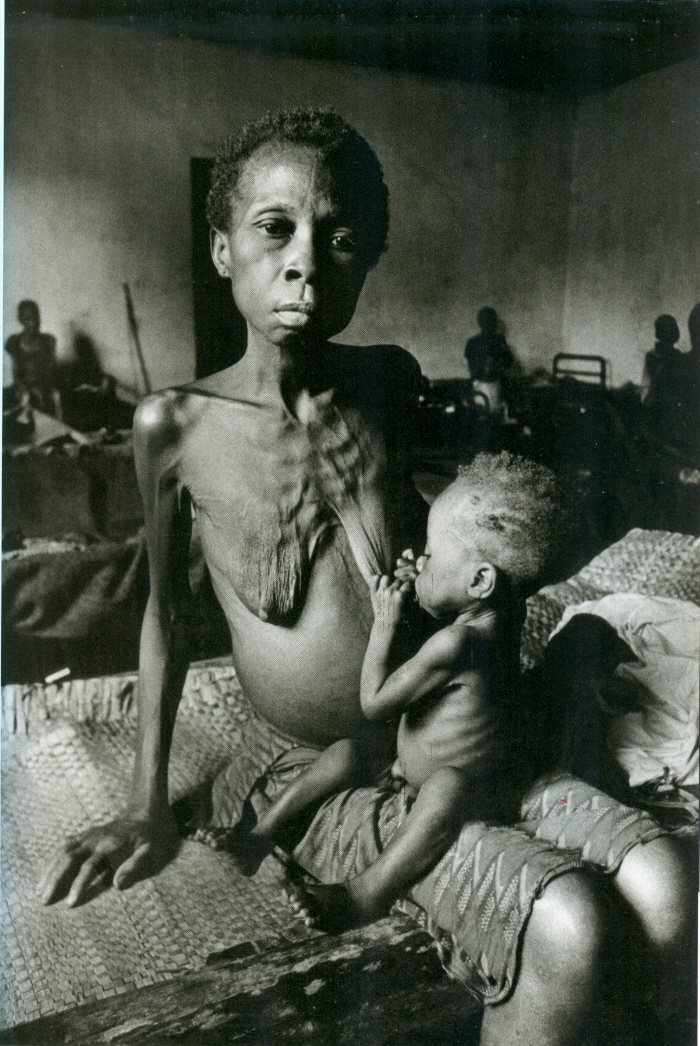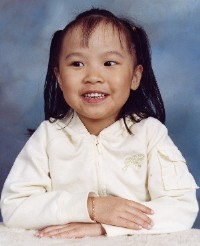 |
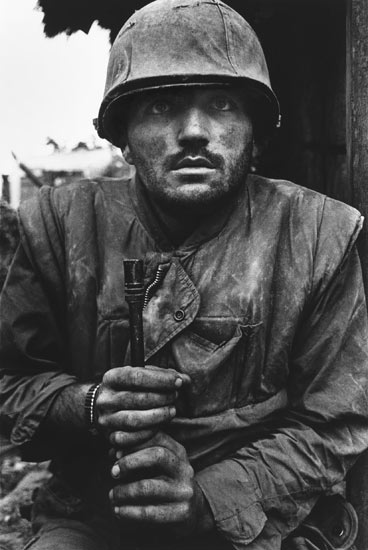 Shell-shocked
Photograph: Don McCullin
Don McCullin's most
celebrated image is his portrait of a
dazed American soldier, entitled Shellshocked
US Marine, Hue, Vietnam. It was
taken during the battle for the city of Hue in 1968 and, in its
stillness and
quiet intensity, says as much about the effects of war on the
individual psyche
as many of McCullin's more graphic depictions of conflict and carnage.
The eyes
that stare out beneath the grimy helmet are not staring at the camera
lens, but
beyond it, into nowhere. Hai con mắt thất thần, nhìn xuyên qua ống kính, tới hư vô! Bức hình trở thành “thương hiệu” của McCullin. Nhưng khi nhắc tới, ông nhăn mặt: Nó làm tôi đau đầu. Bởi vì nó xuất hiện ở khắp mọi nơi. Chẳng khác chi bức hình xử VC của Eddie Adams. " Et je suis las de cette
culpabilité, las de me
dire: Ce n'est pas moi qui ai tué cet homme, ce n'est pas moi qui ai
laissé cet
enfant mourir de faim. Je veux
maintenant photographier des paysages et des fleurs, je me condamne à
la paix. Don McCullin " J'aime la photographie,
je la respecte, je la vénère, je pense à elle tout le temps. Mais je
ne veux pas qu'on dise que je suis un photographe de guerre. Je suis un
photographe, tout simplement. Et c'est le seul titre que je revendique. Don McCullin J'admire depuis longtemps
le parcours héroique de Don
McCullin à travers les régions du monde les plus marquées par l'horreur
et la
souffrance de ces trente-cinq dernières années.(. .. ) Susan Sontag Ở Việt Nam,
McCullin sống giữa đám GI, và rất nhiều trong số họ nghĩ ông khùng. “Họ
năn nỉ thiếu điều giúi vô tay tôi khẩu súng, để bảo vệ và rất ư kinh
ngạc,
khi thấy tôi lắc đầu. Một khẩu súng thì làm gì có chỗ trong bộ đồ nghề
của một
nhiếp ảnh viên. Bạn có đó, như một quan sát viên khách quan." Sawada là bạn thân của Gấu! Thực sự là vậy. Gấu đã viết về anh trong bài viết Tên của cuộc chiến, nhưng, bữa nay bèn nhớ ra, anh là người độc nhất tặng quà cưới, rất bực khi thấy Gấu không mời dự, và khi biết đám cưới tại Cai Lậy, đầy VC ở đó, thì bèn cười, và dẫn Gấu qua terrace ở mãi tít trên thượng lầu khách sạn Majestic làm 1 chầu ăn sáng. Một nhiếp ảnh
viên của UPI, Gấu quên mất tên, bị VC giết, vì đưa
cái máy hình hướng
về phía họ, và họ nghĩ, đó là khẩu súng. Trong chiến tranh, làm một
quan
sát viên
khách quan cũng khó lắm. Trong cuộc chiến Việt Nam, hình
xử VC của Loan đâu có khủng bằng hình VC
làm thịt cả 1 loạt ký giả, nhiếp ảnh viên, ngồi xe Jeep lùn, có gắn tấm
bảng
Press, trong trận Mậu Thân? Huế Mậu Thân 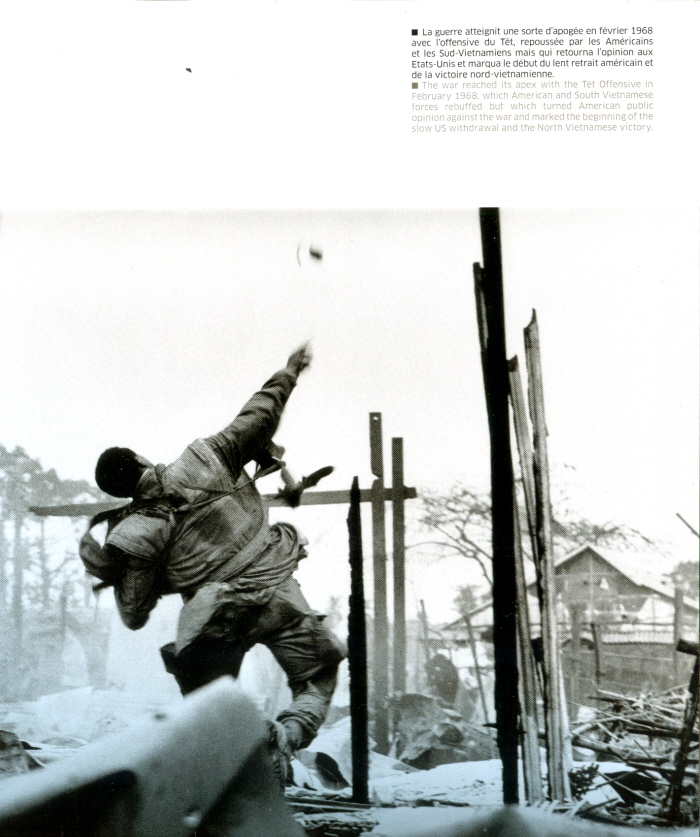 GI quăng lựu
đạn, liền sau đó, trúng đạn VC.
Marine américain lancait une grenade quelques secondes avant d'être blessé à la main gauche par un tir, offensive Hué, sud Viet-nam, 1968 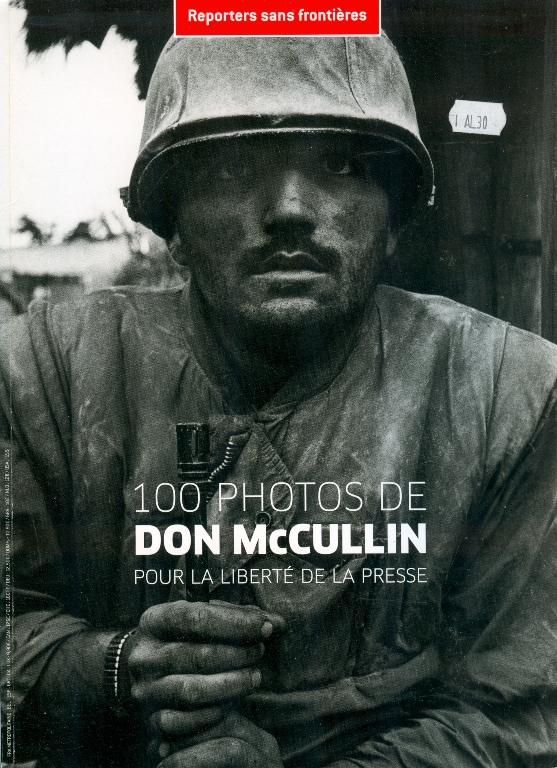 Nhìn lại cuộc chiến Việt Nam Với gương mặt
khắc khổ, giọng nói từ tốn, ông McCullin kể lại cảm xúc và những nỗi
bất an của
mình qua một số bức ảnh tiêu biểu ông đã chụp tại cuộc chiến Việt Nam
từ năm
1965 đến 1973 khi còn là phóng viên ảnh chiến trường cho tờ The
Illustrated
London News. BBC Còm của Gấu
Cà Chớn: Kinh nghiệm
riêng của GCC: 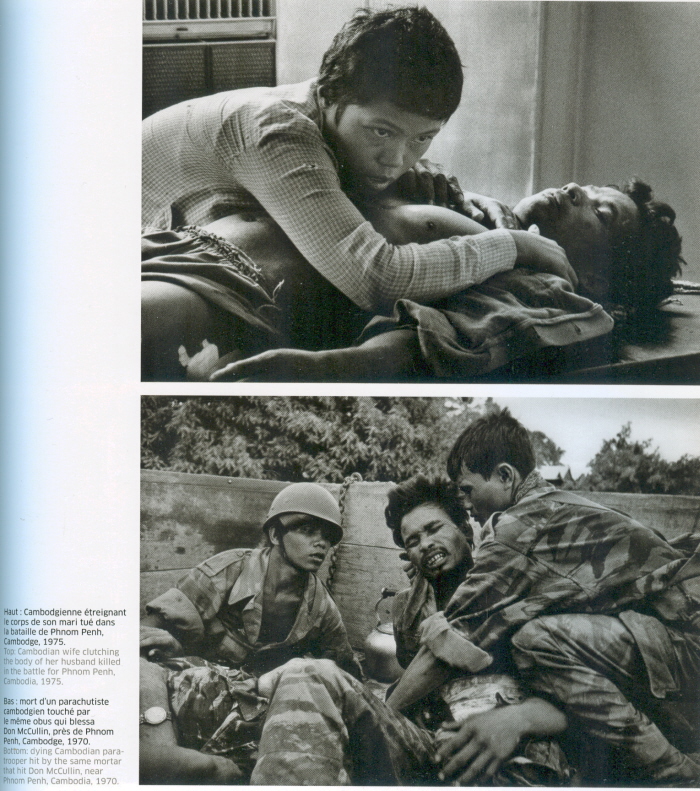 Don McCullin
parle du moment fugitif où s'établit
le rapport avec son sujet, l'instant du "oui". Ce
moment d'intimité nue, lorsque lui ou elle le voit et lui pardonne, au
seuil de
la mort, de la famine, d'un chagrin inconsolable, quand leur enfant git
mort
sur le sol de l'entrée, tué par une bombe lors de l'attaque : quand
même
"oui. McCullin is
talking about the elusive moment of connection with his subject - the
"yes", the moment of naked affinity where he or she sees him, and
forgives him, at death's edge, starving, inconsolably bereaved, when
their own
child lies dead on the hall floor, bombed in the attack: still "yes.
Yes,
take me. Yes, take us. John Le Carré dans la
préface de Au coeur des ténèbres, Robert Laffont,
Paris, 1980. (1) Cái từ
"ma", “my” trong "ma souffrance", "my pain", quá
thần sầu. Câu tưởng đơn giản, mà kinh khủng quá. Theo từ điển
trên mạng : Bà mẹ 24 tuổi
và đứa con, Biafra, Nigeria, 1969 DON
McCULLIN'S IMPOSSIBLE PEACE Between
photographing the construction of the Berlin Wall in the summer of 1961
and his
work on the ravages of AIDS in southern Africa in 2001, Don McCullin
has never
ceased observing the suffering of others through the major conflicts of
four
decades. It is a look filled with anger, sadness, and even despair at
the
unspeakable cruelty man inflicts on his fellow creatures. A gaze
charged with
disbelief, compassion, and solidarity with the weakest, the destitute,
the
outcast, and victims of unacceptable circumstance.  Shaped by War: Photographs by Don McCullin Shell-shocked
Photograph:
Don McCullinDon
McCullin's most celebrated image is his portrait of a dazed American
soldier,
entitled Shellshocked US Marine, Hue, Vietnam. It was taken during the
battle
for the city of Hue in 1968 and, in its stillness and quiet intensity,
says as
much about the effects of war on the individual psyche as many of
McCullin's
more graphic depictions of conflict and carnage. The eyes that stare
out
beneath the grimy helmet are not staring at the camera lens, but beyond
it,
into nowhere. Surprisingly,
when I ask McCullin about the
photograph, which features in this retrospective of his reportage in
Manchester, he grimaces. "It kind of gets on my nerves now," he says,
"because it has appeared everywhere. It's like the Eddie Adams shot of
the
execution of a Vietnamese prisoner." Now 64, and
married for the third time, McCullin lives and works in rural Somerset.
These
days, he concentrates on landscape photography and has just completed
what he
says will be his last book, the epic Southern Frontiers: A Journey
Across the
Roman Empire. "It brings me a kind of peace," he says, "until I
hear the local hunters shooting. Gunfire is a prelude to war for me. I
feel I'm
back there on some godforsaken road passing dying soldiers lying in
culverts." There is a
sense when talking to McCullin that he carries a great burden of loss
and
regret. He has, he says, seen too much in his lifetime and it has left
its mark
on him. He is recognised as our greatest living war photographer,
though he
bridles at the term. "Whatever I do, I have this name as a war
photographer," he says, ruefully. "I reject the term. It's reductive.
I can't be written off just as a war photographer." This
extraordinary exhibition will do nothing to help his cause. Alongside
his
photographs of conflicts in Cyprus, the Belgian Congo, Vietnam,
Cambodia,
Lebanon and beyond, many of which have not been seen before, it
features
contact sheets and magazine spreads from his halcyon days at the Sunday
Times
magazine in the early 1970s. There is also a wealth of personal
material: his
passports, his army boots and helmet as well as his many cameras, one
of which,
a beloved Nikon F, was fractured by a sniper's bullet in a rice field
Cambodia
in 1970 just as he held it up to his face. In Vietnam,
McCullin lived among the American soldiers, many of whom, he says,
thought him
mad. "They kept offering me guns for my protection and, to their utter
astonishment, I kept refusing. A gun has no place in a ¬photographer's
kit. You
are there as an objective observer." He tells me that many of his
contemporaries did carry guns, though. "Dana Stone and Sean Flynn [son
of
the Hollywood actor, Errol Flynn] were straight out of Easy Rider,
riding
around on motorcycles carrying pearl-handled pistols. Cowboys, really.
I think
they did more harm than good to our profession." Both Stone
and Flynn, along with McCullin's friend Gilles Caron, were killed in
Cambodia
in 1970/71, having been captured by the Khmer Rouge. "They were held in
a
jungle clearing and then put to death in the most appalling way," he
says
quietly. Another friend, the great Japanese photographer Kyoichi
Sawada, was
also captured there but somehow talked his way free. He, too, was
killed later.
I ask McCullin if he feels like one of the lucky ones. "I guess so. I
signed up for a job where you have no guarantees. Why should you? War
is war,
war means death. If you go and come back, you are lucky." It was
Sawada who photographed McCullin as he lay wounded in a field hospital
in Phnom
Penh in 1970, having been hit by fragments of a mortar shell. McCullin
says he
was most afraid, though, when he was captured by Idi Amin's soldiers in
Uganda
and held prisoner for four days. "They dug pits outside our cell. The
sense that something awful was going to happen was constant and almost
overwhelming." Closer to
home, McCullin created some of the most memorable images of the early
Troubles.
During a riot in Derry, he was blinded by CS gas and recovered in a
dingy house
that reminded him of his working-class upbringing in Finsbury Park in
north
London. "I was caught between the two sides, with the Provos warning me
off one day and the British army chasing me the next." His images from
there are often surreal: a well-dressed young man nonchalantly carrying
a wrapped
parcel past a soldier who is taking aim at rioters; a woman taken aback
in her
hallway as soldiers in riot gear rush down her street like samurai.
"Oh,
that was just a gratuitous piece of luck on my part," he says, smiling.
"That woman in the doorway, she makes the picture, really." I ask him
if, even in the chaos of conflict, he thought about formal composition.
"Always. Somewhere in your head, you think about how the image will
appear
later. You have to. You want people to see it and be impressed." He
singles out his great photograph of an American soldier hurling a
grenade.
"I was as much a target for the snipers as he was, but I got the shot
that
I saw in my head." McCullin
famously prints his own photographs. Has he ever developed a print and
been
shocked by the result. "The albino boy," he says, without hesitation,
referring to his heartbreaking image of a starving Biafran child
clutching an
empty corned beef tin. "The day I came across that boy was a killer day
for me. There were 800 dying children in that schoolhouse. The boy is
near
death. He is trying to support himself. And to see this kind of
pathetic
photographer appear with a Nikon around his neck …" He falls
silent again for a moment. "Some times it felt like I was carrying
pieces
of human flesh back home with me, not negatives. It's as if you are
carrying
the suffering of the people you have photographed." At the
Imperial War Museum, McCullin's vivid and sometimes shocking testimony
is war
reportage as it used to be. He would not, he says, want to be a young
war
photographer in Iraq or Afghanistan. "No way. I mean, the idea of
agreeing
to be embedded? No. It's an absolute tragedy. We spent years
photographing
dying soldiers in Vietnam and they are not going to have that anymore.
I
understand that, but you have to bear witness. You cannot just look
away." |
